Munich, Germany is one of my favorite cities. I’ve visited Munich more than I’ve visited any other city outside the U.S. and I do so every year. Unfortunately, being the birthplace of the Nazi party, Munich will forever be associated with arguably the most heinous period in history.
As someone who loves this city, this is truly a shame. But as a WWII travel enthusiast, it gives me a chance to always find new ways to learn about this era in a place that doesn’t try to hide its ugly past. One of those ways is by visiting the Munich NS-Documentation Center.
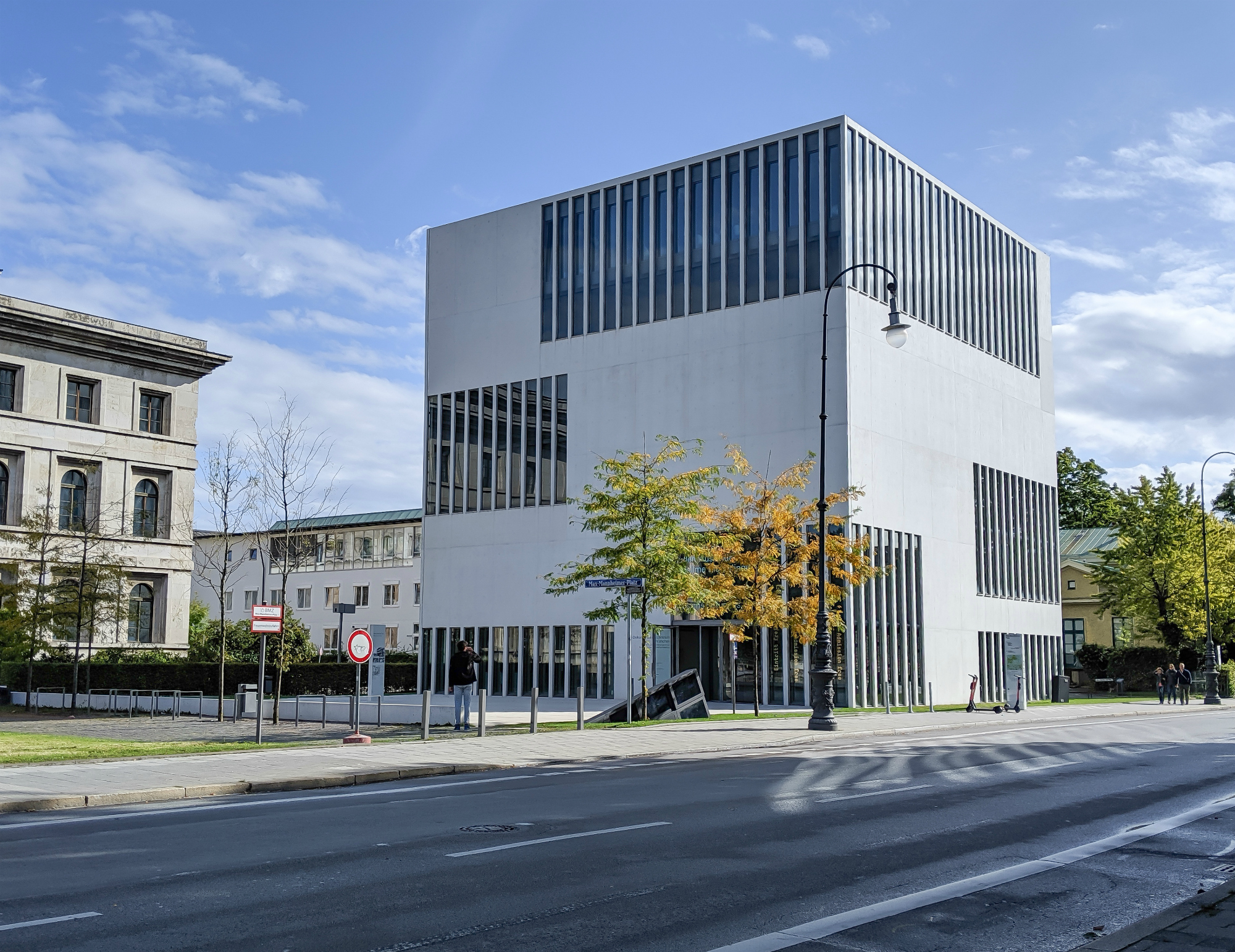
What is the Munich NS-Documentation Center?
Opened in 2015, the Munich NS-Documentation Center (locally known as NS-Dokumentationszentrum München) is a museum dedicated to… hang on. Back up. You shouldn’t even call it a “museum” really… education center would be more appropriate.
It focuses less on displaying and more on teaching and remembering. And its topic? The Nazi party:
- How it started
- Where it came from
- Its key players
- Its crimes
- Pivotal moments in history
- Groups that stood up to it (like the famous White Rose movement)
- Munich’s role as the “capital of the movement”
- Where it all stands today
Related: See all the WWII sites you can find in Munich here.
Where is the Munich NS-Documentation Center?
The Munich NS-Documentation Center is located in the Maxvorstadt district. It’s halfway between Königsplatz and Karolinenplatz, just down the street from Odeonsplatz. That will all make a lot more sense when you get there I promise. You know what, here’s a map:
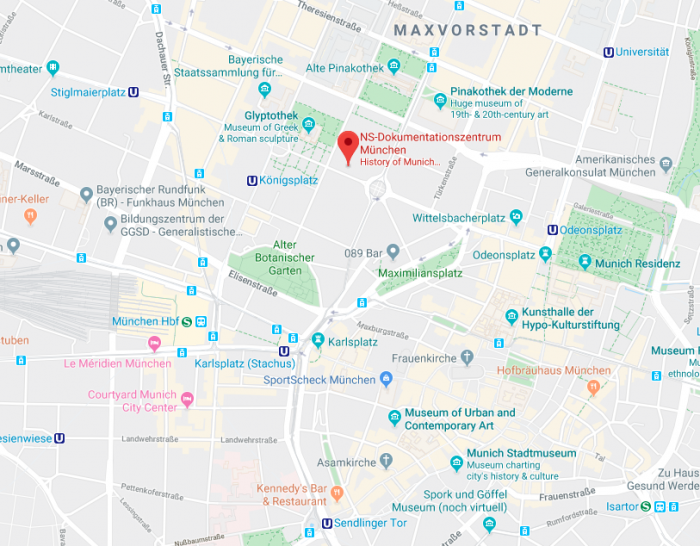
It’s pretty centrally located within the city of Munich and walkable to and from just about everywhere else you’ll go during your visit. For instance:
- From the Hauptbahnhof (Munich’s main train station): 12 minutes
- From Marienplatz: 16 minutes
- From the Hofbräuhäus: 19 minutes
- From the English Garden: 20 minutes
- From the Theresienwiese (Oktoberfest): 28 minutes
So why is the Munich NS-Documentation Center located where it is? Well, actually, reason #1 to visit the Munich NS-Documentation Center is…
1. Its location is significant
The current building housing the Munich NS-Documentation Center is located on the site of the former “Brown House.” This is the former headquarters of the National Socialist German Workers’ Party (NSDAP) which would become/and the birthplace of the Nazi party as we know it.
Named for the color of uniforms the party members wore, the Brown House was a mansion purchased for use by the Nazis in 1930. Before this, they’d previously just been using Munich beer halls to conduct their business.
The Brown House
The Brown House served as a center of operations for the Nazi party from 1931 until it was destroyed by an Allied bombing raid in October of 1943, even after they moved most of their business to Berlin.
Though the current Munich NS-Documentation Center is located in a bright and shiny new building, many of the surrounding structures are as they were when the Nazis called this place home.
Outside the Center you’ll see signs pointing out historical structures here and there. One example is the ruins of one of the Nazis’ Honor Temples–two enormous structures erected to house the remains of the sixteen soldiers killed in Hitler’s Beer Hall Putsch who the Nazis worshipped as martyrs.
Besides the Brown House, this entire area between Königsplatz and Karolinenplatz served all the Nazis’ needs for mass political rallies, marches, book burnings, administration, and much more. The Brown House was just one small corner.
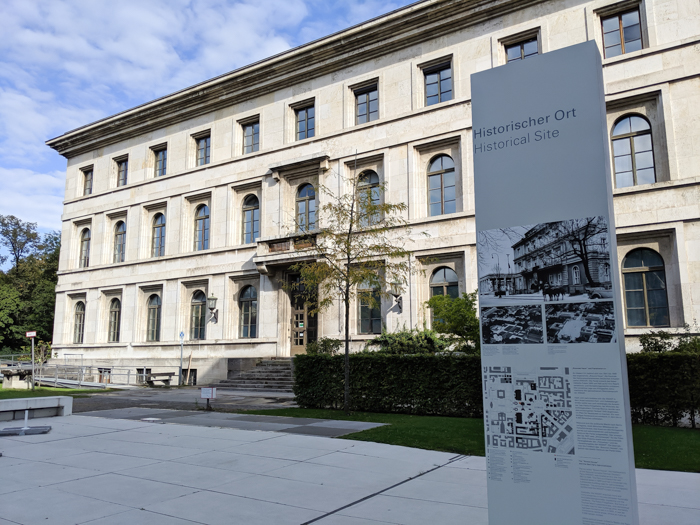
Looking for a great day trip from Munich? Don’t miss the Eagle’s Nest in Berchtesgaden. (I recommend skipping the bus though and doing the Eagle’s Nest hike instead!)
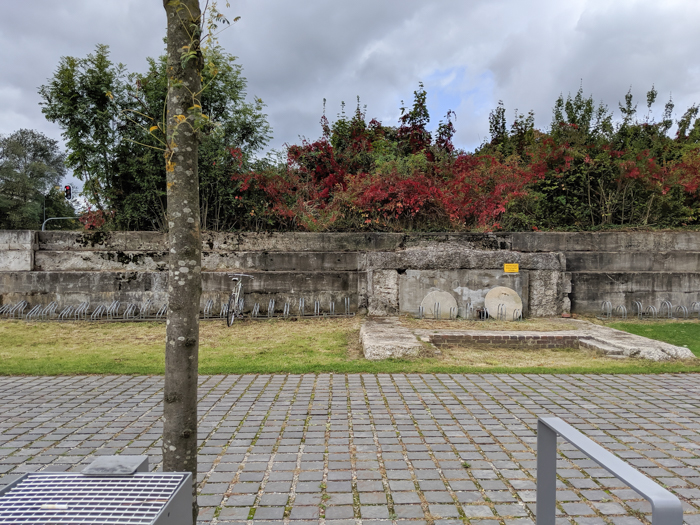
Part of the significance of the Center’s location really becomes evident when you reach the third floor. Here, you’re shown historical footage on large projection screens hanging in front of the building’s northwest-facing windows.
On the screens you’ll see footage of these mass Nazi rallies and marches through Königsplatz (and other events), and, simultaneously out the window, you’ll see Königsplatz. Only this time you’ll see a kid riding a bike down an empty sidewalk and a horse-drawn beer carriage slowly making its way toward the arches. Seeing these two very different scenes of the same place is striking in its effect.
For me, learning about a topic at the source is always the most effective way to learn.
2. Admission to the Munich NS-Documentation Center is free
Admission to the Munich NS-Documentation Center is absolutely free.
When you walk in, there’s an administrative desk on the left side of the room, manned by a couple of friendly employees who will, once again, assure you that it’s free. Then you’ll pull out your wallet and try to rent an audio guide at which point you’ll be handed one and told, “Go ahead and take it. It’s free.”
While you’re in Munich, you should definitely check out Dachau Concentration Camp just an hour outside the city. It’s a life-changing day trip. Before you go, read this complete guide to visiting Dachau Concentration Camp.
3. It answers a commonly asked question
One of the most asked questions when it comes to Nazi history and crimes (if not the most), is “How in the world could this have happened?” I know, personally, I’ve asked that at least hundreds of times. To myself, to the universe, to the internet, to that guy on the bus that one time. And if you’ve ever wondered the same, the Munich NS-Documentation Center has the answers.
Here, you’ll learn how the conditions of Munich, Germany, Europe, and beyond in the period following WWI were but the fertile soil in which the Nazi party could—and did—grow and grow and grow.
You’ll learn about Hitler’s early life and how he rose from virtually nothing to being the most powerful man in the world, step by step. You’ll learn about the bases for anti-Semitism, racial hierarchy, and other Nazi ideologies. And all of this will help explain How in the World This All Happened.
If you’ve ever asked “How in the world could—WWII, Hitler, National Socialism, the Holocaust—have happened?” rest assured there is an answer and it’s to be found at the Munich NS-Documentation Center, the birthplace of it all.

4. The Munich NS-Documentation Center is extremely well organized
I’ll be the first to admit digging deep into the cracks of WWII can, at times, be overwhelmingly technical. The Munich NS-Documentation Center does a great job of presenting a large amount of complex information in a manner that any person who walked in off the street because this place is free can easily digest. Digest, not stomach, let’s make that clear.
After picking up your audio guide, catch the elevator and head to the fourth floor where it all starts. From here, the information presented will be chronological in order, from the top floor down.
To get its points across, the Munich NS-Documentation Center utilizes photographs, video footage, audio recordings, and informational displays–vertical, around the room’s perimeter, and all numbered so you always know where to go next, with supporting horizontal displays in the room’s center.
Munich NS-Documentation Center floors
- 4th floor: Origins and Rise of the Nazi Movement 1918-1933
- 3rd floor: Dictatorship and Society in National Socialism 1933-1939
- 2nd floor: Munich and the War 1939-1945
- 1st floor: Dealing with the Nazi Era after 1945 + Special exhibitions
- Lobby (because in Europe the first floor is always the one above the ground floor): Information and ticket booth, bookshop
- -1st floor: Learning Center, Library, Workshops, Cloakroom
- -2nd floor: Auditorium, Cafeteria
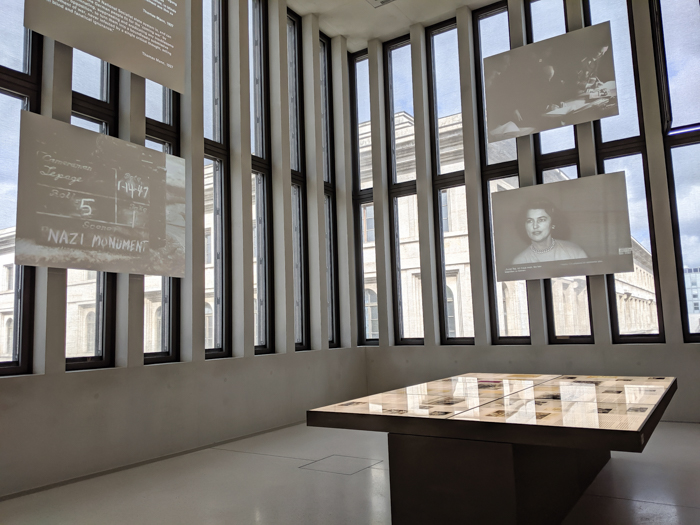
5. The displays are both in German and English
I’m always surprised when I visit any sort of tourist attraction, tour, museum, etc. and there isn’t any English to be found (in Germany and elsewhere). But here at the NS-Documentation Canter, American visitors needn’t worry. All displays are in both German and English.
Also check out my post on visiting Monte Scherbelino in Stuttgart, Germany – an unusual WWII site built from the rubble of Allied bombings.
6. They offer an awesome audio guide
Part of what makes a visit the Munich NS-Documentation Center so great is the included audio guide. It’s available in many languages and, again, for free.
The guide summarizes the information displays, gives even more background information, and includes commentary from actual witnesses to the points you learn about. It’s also pretty comfortable to wear, whereas most often they’re not.
I realize that’s the point of many-an-audio guide, but I felt the one at the Munich NS-Documentation Center far exceeded many others I’ve used.
And because the majority of visitors do use the audio guide, this helps keep the Center in a constant state of near silence. If you have a little bit of extra time to spend at the Munich NS-Documentation Center, be sure to utilize the incredible audio guide.

7. The Munich NS-Documentation Center has a wonderful bookshop on site
If you’re as into reading books on WWII-topics of all kinds as I am, the bookshop at the Munich NS-Documentation is right up your alley.
This bookshop is a branch of the Literaturhandlung, a renowned Munich bookshop dedicated to non-fiction accounts of Jewish life and history and fictional books by Jewish authors.
They’ve got books on, well, the history of National Socialism obviously, but also a wide range of other WWII topics and they’ve got them in German and in English. How many new books did I add to my “to-read” list? I don’t know; I ran out of data before I could look them all up. But it’s a lot.
The bookshop is in the rear part of the ground floor and can easily be missed. Don’t forget to make a note to remember to check it out!
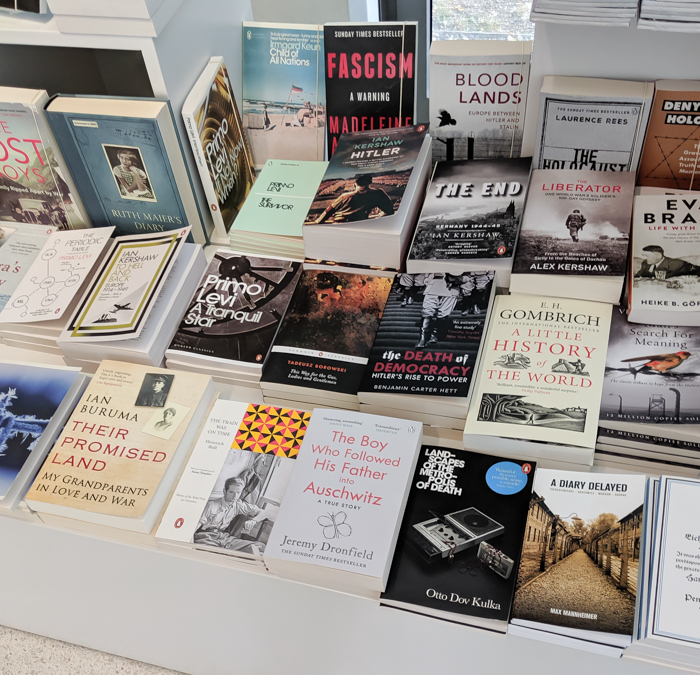
Things to know before you visit the Munich NS-Documentation Center
Closed on Mondays
First and foremost, the Munich NS-Documentation Center is closed on Mondays. However, if a German bank holiday falls on a Monday, the Center will be open.
The street name has changed
Secondly, the name of the street on which the Munich NS-Documentation Center is located has recently been changed.
Formerly, the Center and the Brown House occupied the same space on Briennerstraße. However, in 2018 the Center’s address was renamed Max-Mannheimer Platz 1 in honor of Max Mannheimer, a Holocaust survivor and Jewish activist. However, on many maps the street still appears as Briennerstraße.
How long will it take you
Depending on both your interest in the topic and how much you know about the subject already, how long you spend at the Munich NS-Documentation Center will vary. Personally, I spent one hour on the 4th floor alone, and then another two on the subsequent floors all together, but you could definitely spend much longer.
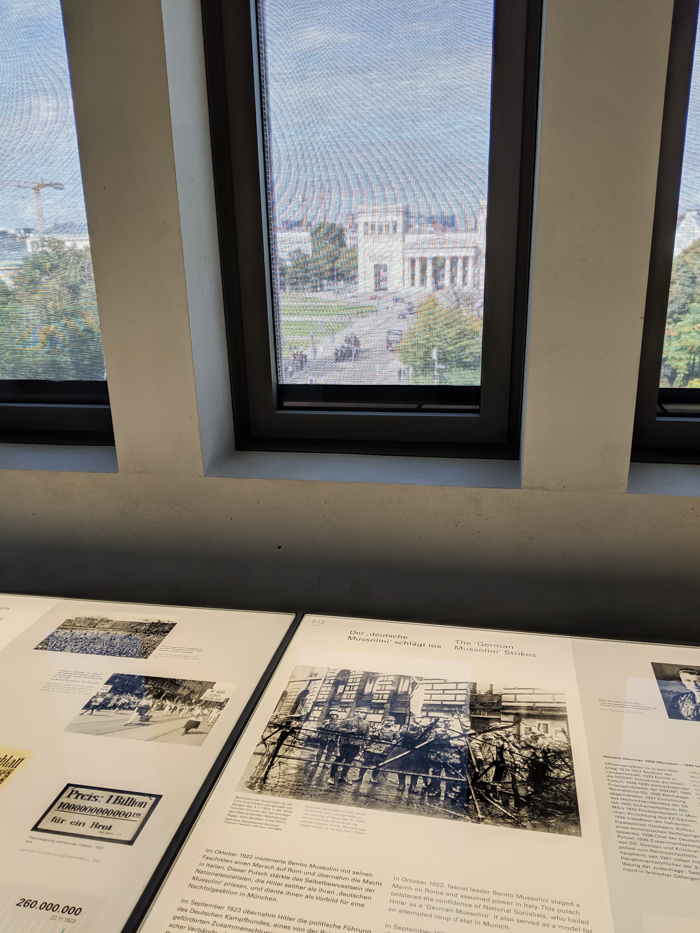
Recommended reading
Here are a few great books to prepare you for your visit to Munich and the NS Documentation Center:

Recommended watching
And here are a few great movies and shows to watch:
More information for visiting the Munich NS-Documentation Center
- Hotels: Find great places to stay in Munich on Booking.com (though Hotels.com and Expedia have good deals too). VRBO is best for apartment rentals.
- Rental cars: Check out the best rental car deals here.
- Local tours: Check out all the great options from Viator and Get Your Guide.
- Travel planning: Pick up a Germany guidebook and this helpful Germany customs and culture guide.
- Want more? See all my Germany posts here.
Like this post? Have questions about visiting Munich or the Documentation Center? Let me know in the comments below. Have a great time in Germany.

Save this info, pin this image:

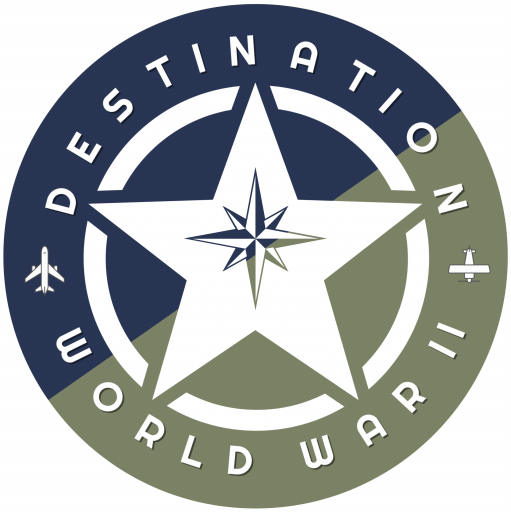

This is very informative and helpful! My family and I are considering booking a trip to Germany in late-December but are concerned with the weather weather & the possibility of the museums being closed. Do you possibly advise against going or do you think we would still be able to enjoy and maximize our visit?
Hi Nathaniel, Late December is actually one of the most popular times to visit Germany (Christmas market season). All of the museums should still be open and winter weather is typically minimal, depending on where exactly you’ll visit. Which places are you concerned about being closed?
Thank you for clearly outlining what to expect… nice to find another woman with a fascination for anything WW2…still a long way to go
Thank you, Julie. 🙂
Thanks so much. Useful and informative
I’m make a special trip to the museum on business trip to Salzburg.
Best,
Patrick Kennedy
San Francisco
Thanks Patrick, happy to hear that!
Ashley, I just found this part of your blog yesterday. And I can’t stop reading. I have a strong interest n WW 2, and Jewish life etc. I have learned so much from your posts, I’m thrilled I happened onto this sideline of yours. Thank you so much !
Yay!! I’m so excited you’re here. And of course I love that you also love WWII stuff as well. Welcome! 🙂
“Unfortunately, being the birthplace of the Nazi party, Munich will forever be associated with arguably the most heinous period in history…” – Sadly this is true. But for a better future it is necessary that experts fins out how so many people and firms in Munich could secretly collaborate with the Nazi party. For sure not all did so, but many ! Perheps the experts in the centre find some unknown secretes one day !?
That’s definitely not out of the question! We think we know all there is to know… but new details and info are always being discovered.
You nailed this center! As an American, not even a war buff, I have spent, over years, days in this center. From the top floor to the basement there is so much to learn. I still haven’t finished the audio guides. The library- with the collection of burned books is rattling. Following the rise of naziism in this centers’ exhibits is disturbing and alarming to view in the context of today’s world but well worth the intellectual journey.
Thank you, Valerie! I agree – it’s such an important museum!
This is really interesting, Ashley. We’re going to visit next time we’re in Munich! Thank you!
Thank you! It really is an interesting stop – let me know what you think!
Ashley,
Thank you for this post. My wife and I will be travelling to Munich in a couple of weeks, and I’m adding the Munich NS-Documentation Center to our To-Do list.
Awesome! So glad to hear that Jeff. It’s such a great learning experience. Enjoy your time in Munich!